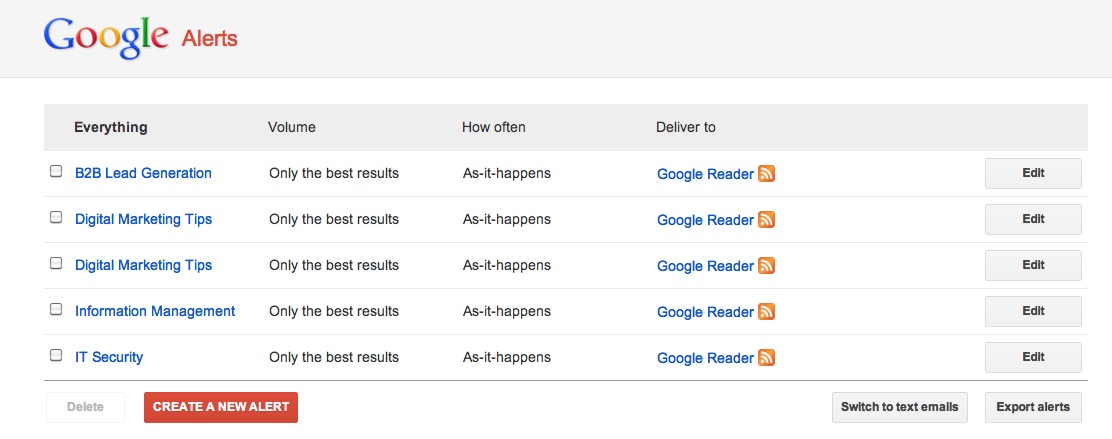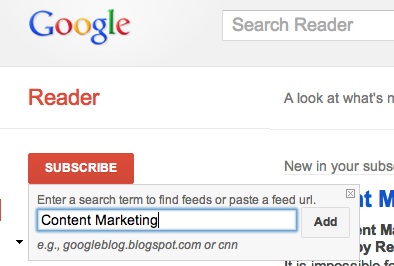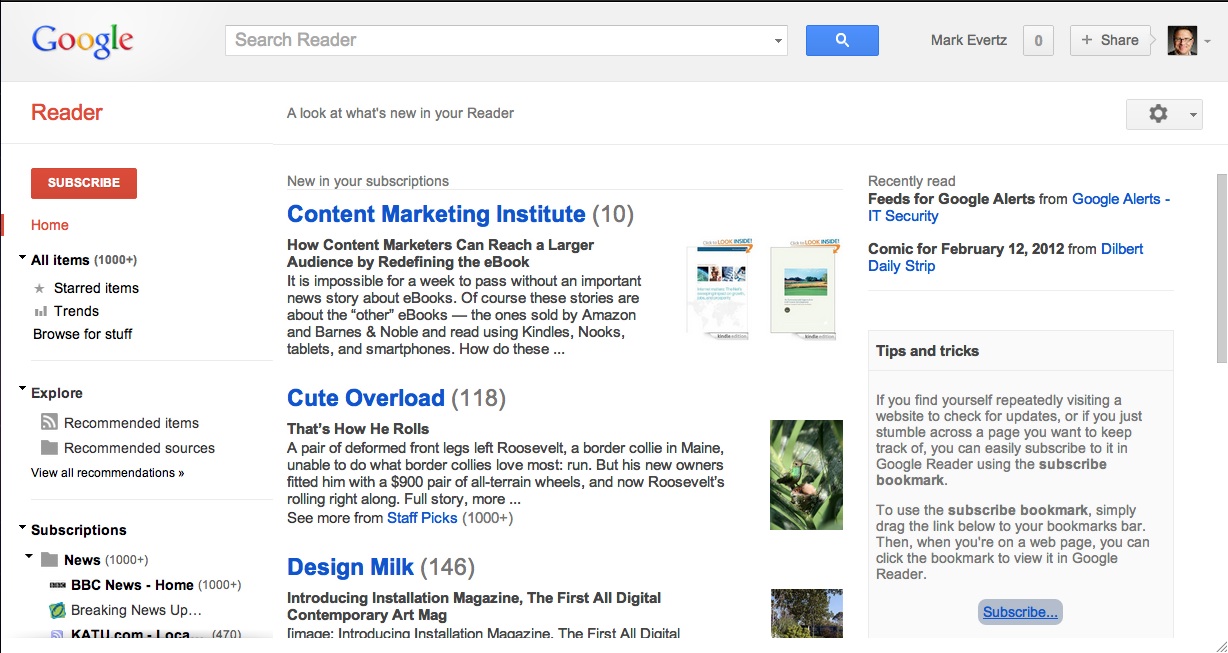
How To Measure Your Blog’s Effectiveness
To measure your blog’s success, start by setting your blog’s goals and determining which metrics are most effective to track your progress against these objectives. This holds whether your blog is B2C, B2B, not-for-profit (NFP), or solorpreneur.
Blog metrics are all about attracting the right audience and getting them to take appropriate action as a result of reading your posts.
Further, before you jump in and start tracking blog results, assess the difficulty and cost of your related analytics. While there’s a wide range of options available, Google Analytics, which I use, provides basic tracking of blog visitors. It’s free and easy to use.
 65 Blog metrics to track blog effectiveness
65 Blog metrics to track blog effectiveness
Most blog goals fall into one of nine major categories outlined
below. To help you get your blog metrics on course, here are 65 options
organized by goal to get your blog’s tracking going.Blog Goal 1 – Attract new prospects.
- How many visitors do you have?
- How many unique visitors do you have? This shows the number of individuals who visit your blog.
- Where are your readers physically located? This matters if you’re selling advertising and/or product that requires shipping and other operational logistics.
- What type of devices do readers use to consume your blog content?
- Do readers sign up for your RSS feed? (You can use Google’s tool for this.)
- Do readers register for your emailings?
- Do readers request other business or purchase information?
- Do readers call your business? This assumes that you’ve included a page about your business with a unique phone number. This information is useful to incorporate into your About page as well as for local search purposes.
- Do visitors recognize your brand when they see your blog?
- Does the blog improve brand recall?
- Does the blog enhance brand favorability?
- Does the blog increase intent to purchase?
- Does your blog get mentions on other blogs? (This is aided by having a program of guest blogging on other people’s blogs.)
- Does the blog drive earned media impressions in terms of social media shares? The most popular options are Facebook, Twitter, LinkedIn, Google+ and Pinterest.
- Do your readers share your posts via email? This is particularly easy for readers who receive your blog’s emailings.
- Do other sources share your content such as round up emailings, like SmartBrief for Social Media and Who’s Blogging What?
- Do you cross promote your blog content on owned media to increase readership?
- Do your blog posts get published on other third party media venues?
- How much time do visitors spend on your blog? Does this vary based on the day of the week and time of the year?
- What proportion of your readership is returning visitors?
- How many pages do visitors read on average?
- Do readers spend more time on specific articles or topics? Are these the areas that you are looking to promote?
- Do readers share your blog posts via social sharing?
- Do readers leave comments on your blog or other social sites where you share your content? Most readers will lurk, reading posts but not taking any further action.
- Do readers submit guest blog posts?
- What is your blog’s load time? Speed is an important factor for search rankings.
- What keywords do readers use to find your blog? Has your ranking improved for these keywords? (Here’s more information regarding blogs and search optimization.)
- Do your post URLs use meaningful words rather post IDs? (Here are other SEO tips.)
- Do you use other media formats like video, audio, e-book or other content in your blog posts? If so, do readers view or download these other content formats? If not, are there other reasons, such as a broken link?
- Do your images (and other non-text content) use descriptive words in their filenames, have title tags and alt tags to improve optimization?
- How many sites link (in-bound links) into your blog? How influential are these sites?
- How many outbound links does your blog have? Has this helped get attention of experts in your field? Are you sharing the love with other blogs and providing value to your readers?
- Do you have links to other relevant areas (intra-blog or company links) of your site? Do readers click on links in your posts? Do they click on links to related posts?
- Is your blog gaining traction? How many pageviews does your blog get in a day and a month? How does the performance compare to the prior month and the same month last year?
- Which types of articles do people read such as opinion, how-tos, etc.? Do specific categories resonate with readers or certain types of articles? Are you creating additional content around the topics you’re readers are interested in? Are you using an editorial calendar to guide your decisions?
- Does your blog rank within your category? For example, this blog, HeidiCohen.com has been shortlisted for top content marketing blog and top social media blog.
- Do other thought leaders link to your blog posts?
- Do other thought leaders engage with you in the comment section of your posts?
- Do you get media requests for your insights?
- Do you get requests to write guest blog posts?
- Do you get requests to speak at industry events?
- Do you get work requests that you can attribute to your blog? For example, they come through your blog’s email or mention your blog.
- Can you track sales to your blog? For example do you have special links to product pages on your website.
- Does your blog support product sales with how-to and specific product information? Among the elements to track are product page print outs, targeted promotion codes used and click-throughs to purchase or place in cart.
- Which specific pages do people visit? Do readers visit your most popular pages?
- Where do readers go when they leave your blog? Do you send them to product-related pages on your company site?
- Does the blog’s content reduce time to purchase decisions? Do you link to it from your emailings and other websites?
- Are you generating business leads based on the authority built by your blog?
- Do you use your blog to distribute tailored promotions? Use a targeted call-to-action and a unique promotional code to track results.
- Do you carry blog advertising including banners, Google Adsense and sponsorships?
- Does your blog have affiliate marketing?
- Does your blog provide post-purchase support? Does your blog help buyers with instructions and other information for using your products?
- Do your customers read your blog?
- Do your customers share your blog posts?
- Do your customers comment on your blog posts?
- Do your customers share photos or images using your product?
- Do your customers participate in interviews for your blog?
- Has your blog resulted in associated reduction in customer service inquiries?
- Has your blog caused a decrease in search optimization expense?
- Has your blog reduced other aspects of your marketing budget, such as content marketing?
- What’s your blog’s content creation cost? This is the expense for blog content. If you’re doing this yourself, how many hours do you spend blogging and what is your hourly fee? The same holds for your staff members. Make sure that it’s fully loaded.
- What is the cost for additional editorial support? Does someone edit and proof the individual posts?
- What is the cost for technical support? This includes uploading posts, adding in links, image resizing and placement and on-going site maintenance.
- What is the cost for the URL and hosting? Are there times when you need additional support?
- What are your blog’s design costs? Are these one time or on-going?
 In this example from one of our clients, the nationally syndicated TV show and video website
In this example from one of our clients, the nationally syndicated TV show and video website 
























 SocialBro offers many features to manage your Twitter account.
SocialBro offers many features to manage your Twitter account. SocialBro's filters allow you to find your relevant target demographic.
SocialBro's filters allow you to find your relevant target demographic. When you monitor hashtags, you can find relevant Twitter users who use them.
When you monitor hashtags, you can find relevant Twitter users who use them. Results of competitors' analysis.
Results of competitors' analysis. Best time to tweet based on SocialBro's analysis.
Best time to tweet based on SocialBro's analysis. Schedule the times you'd like to tweet in your Buffer dashboard.
Schedule the times you'd like to tweet in your Buffer dashboard. When a website has a Buffer button, just click it and you've buffered a post.
When a website has a Buffer button, just click it and you've buffered a post. You can either use the same text or change the text you want to tweet and click the green Add to Buffer button and you're done.
You can either use the same text or change the text you want to tweet and click the green Add to Buffer button and you're done. Analytics from Buffer showing you how your tweet performs.
Analytics from Buffer showing you how your tweet performs. Tweepi helps you manage your followers.
Tweepi helps you manage your followers. The Follow Followers feature allows you to follow users who are following any Twitter account.
The Follow Followers feature allows you to follow users who are following any Twitter account. This list shows the most recent followers.
This list shows the most recent followers.
 Create news alerts and deliver them to Google Reader.
Create news alerts and deliver them to Google Reader. Subscribe to a topic of interest to track.
Subscribe to a topic of interest to track. Create a news dashboard with key topics.
Create a news dashboard with key topics.